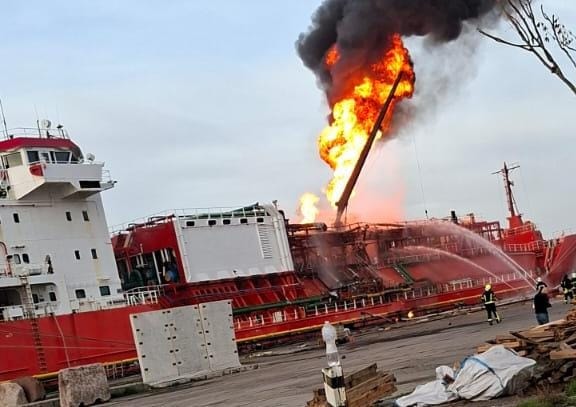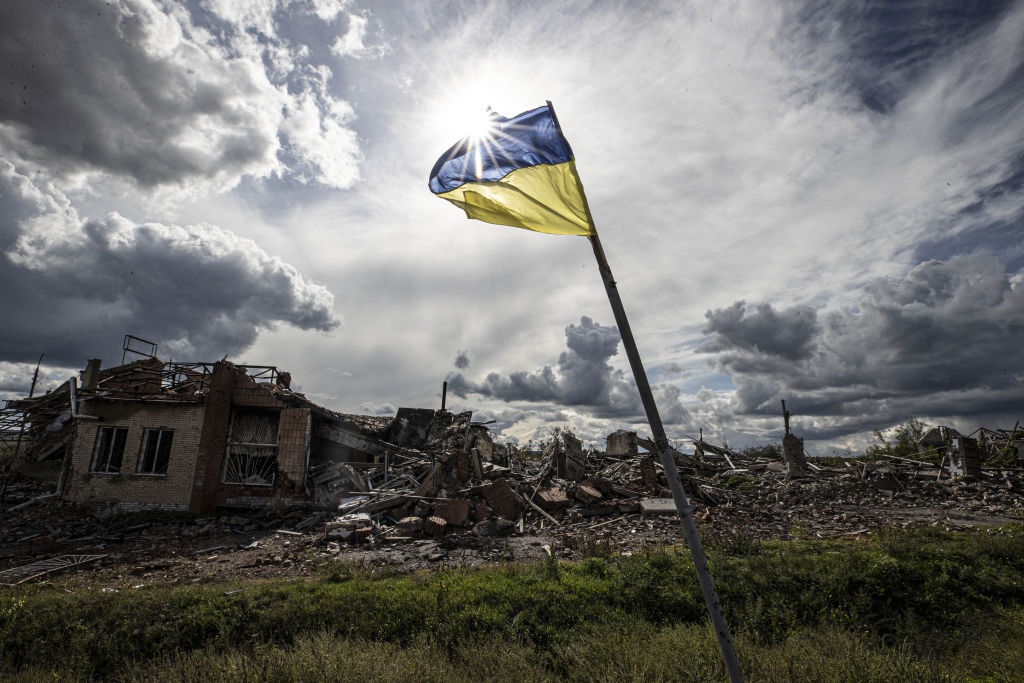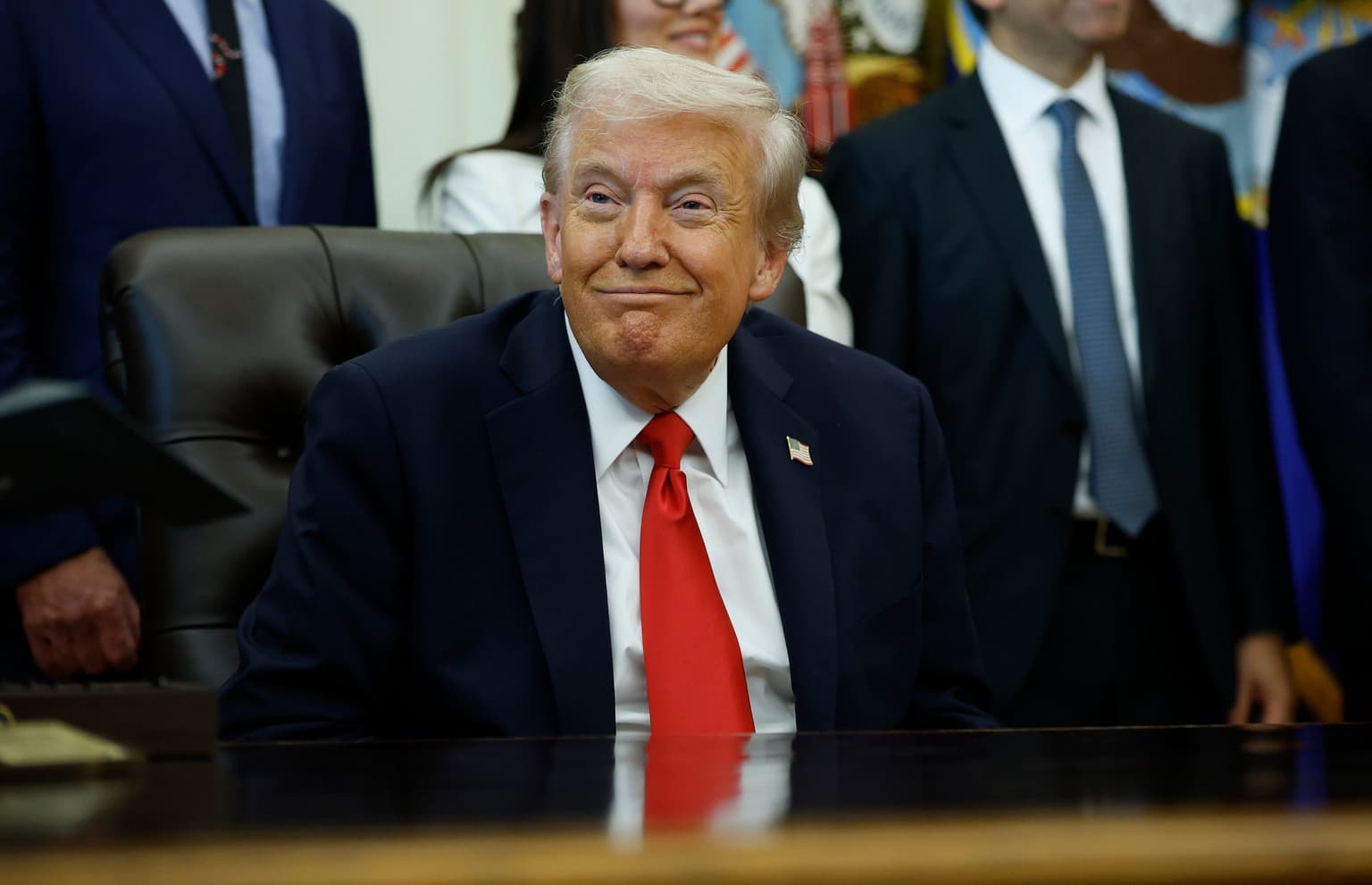
Trump's war mediation: 8 months of shifting between Ukraine, Russia
Trump's role in mediating Russia's war against Ukraine appears to be stuck in a loop — one defined by reversals, contradictions, and shifts in tone between Kyiv and Moscow.
U.S. President Donald Trump in the Oval Office of the White House in Washington, D.C., on Oct. 16, 2025. (Kevin Dietsch / Getty Images)
U.S. President Donald Trump's role in mediating Russia's war against Ukraine appears to be stuck in a loop — one defined by reversals, contradictions, and shifts in tone between Kyiv and Moscow.
After meeting President Volodymyr Zelensky in September, the U.S. president appeared confident that Ukraine could reclaim its Russian-occupied territories.
"I think Ukraine, with the support of the European Union, is in a position to fight and win all of Ukraine back in its original form," Trump wrote on Truth Social on Sept. 23.
A month later, after a call with Russian President Vladimir Putin, Trump changed course.
"They could still win it," Trump said at the White House. "I don't think they will. They could still win it. I never said they would win it... you know, war is a very strange thing."
His change of tone coincided with the announcement of a new meeting with Putin in Budapest, only for it to be called off a few days later. Following another change of course, the U.S. Treasury announced on Oct. 22 that it had imposed sanctions on Russia's two largest oil companies — Rosneft and Lukoil.
Here is a timeline of the U.S. president's mediation back and forth.
The push for peace
Trump's mediation began with grand promises. On Feb. 12, following a call with Putin, he said negotiations to end Russia's war in Ukraine would start "immediately."
After that, Trump spoke with President Volodymyr Zelensky and said both wanted to "stop the millions of deaths" caused by Moscow's war against Ukraine.
The first U.S.-Russia meeting occurred on Feb. 18, with the Russian delegation led by Foreign Minister Sergey Lavrov and the U.S. delegation headed by Secretary of State Marco Rubio.
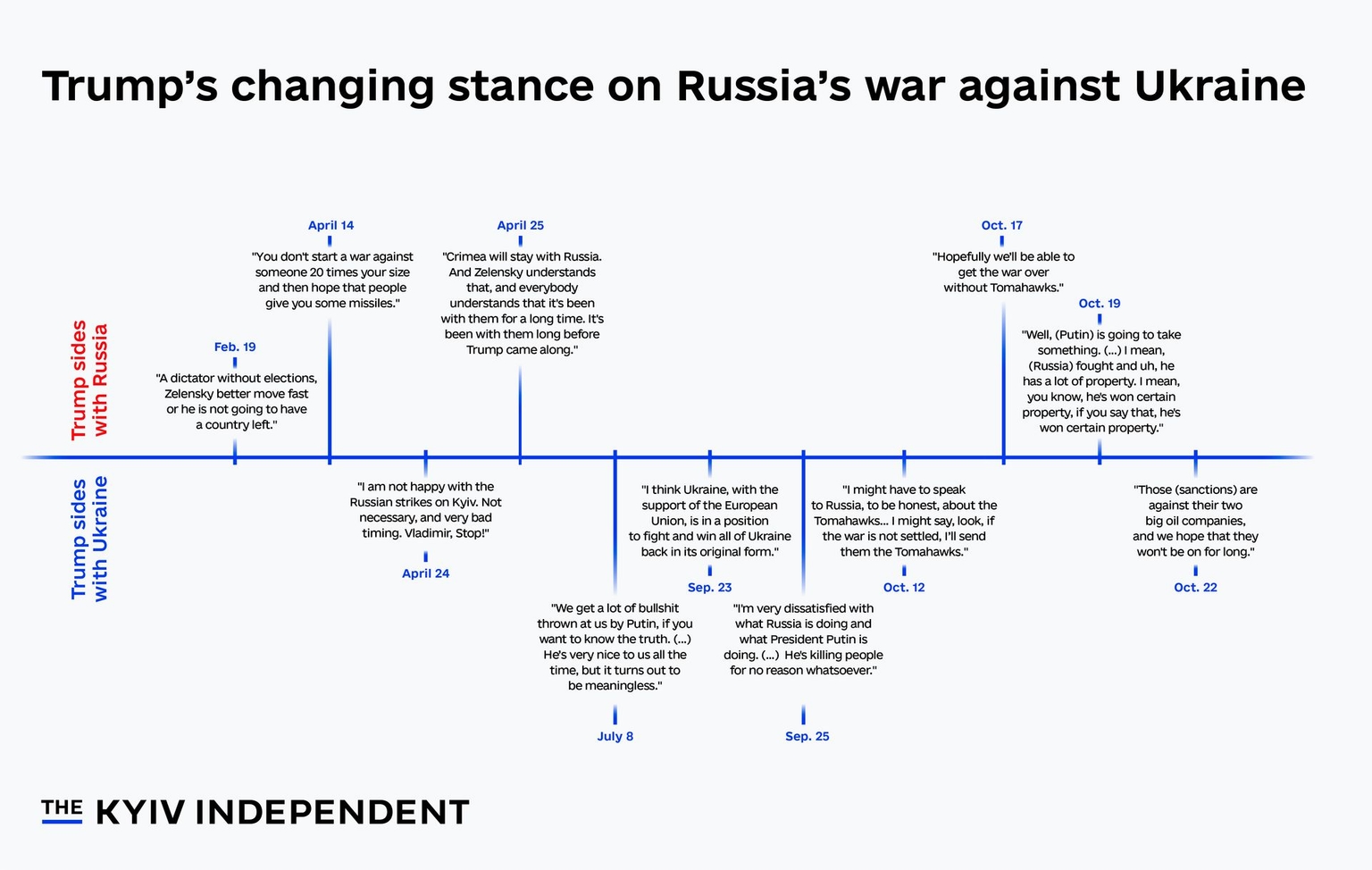
This was the first official in-person engagement between the two sides since the start of Russia's full-scale invasion. The talks focused on ending the war and on strengthening bilateral relations.
Speaking to Russia’s state media, Yuri Ushakov, an advisor to the Russian president, said it was a "very serious discussion of all the issues we wanted to touch upon."
A day after the meeting, Trump began publicly berating Zelensky, calling him a "dictator without elections" and repeating the Kremlin's false claims that Ukraine's president was illegitimate.
"Zelensky better move fast, or he won't have a country left," Trump wrote.
When Zelensky traveled to Washington on Feb. 28, tensions spilled into the open. After a heated meeting at the White House, Trump said Zelensky "is not ready for peace."
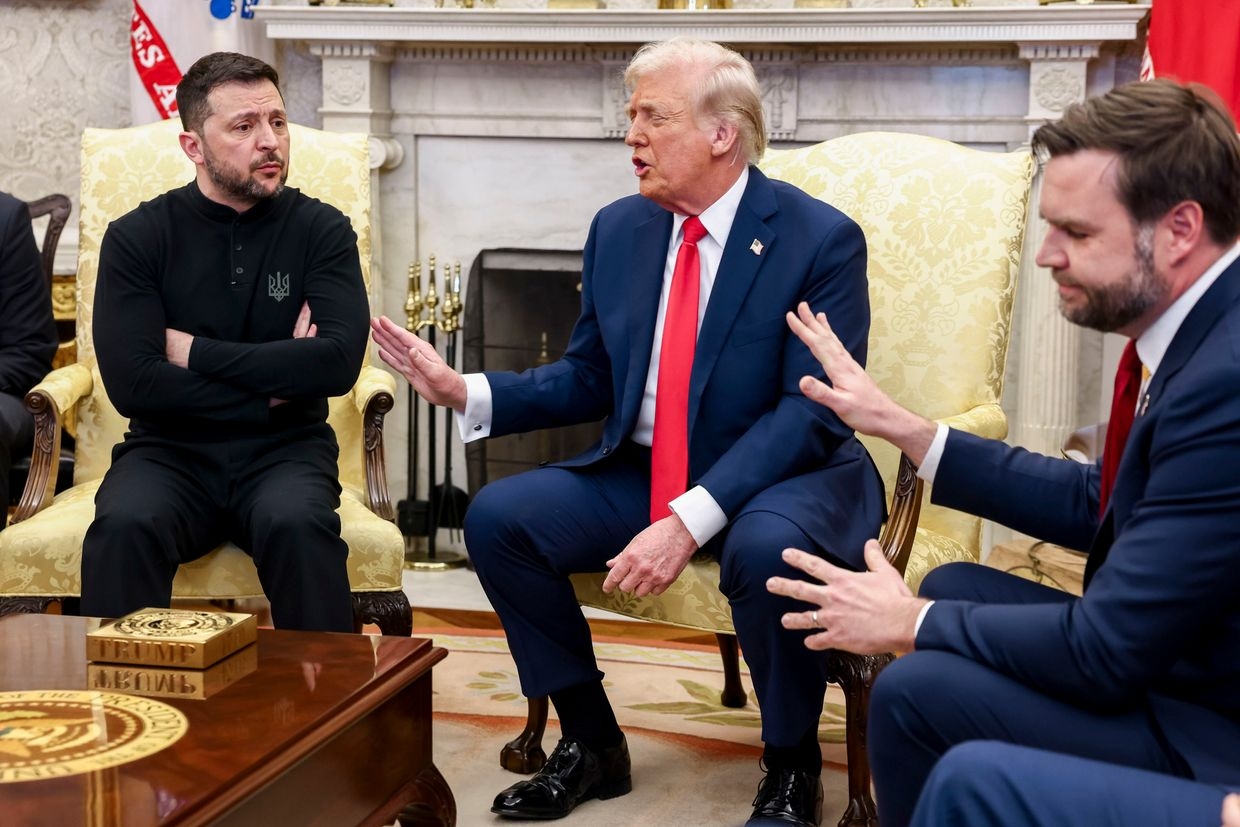
U.S. top officials were pressuring the Ukrainian president to apologize after the meeting.
After that, Zelensky posted on social media on March 4 that his meeting with Trump "did not go the way it was supposed to be," calling the fallout "regrettable."
The failed ceasefire
Despite the diplomatic friction, Trump pressed ahead.
In mid-March, the Kremlin said that Putin had agreed to a temporary 30-day pause on strikes against Ukrainian energy infrastructure after a 90-minute call with Trump.
The interaction on March 18 was their second phone call.
Zelensky confirmed he would reciprocate by stopping strikes on Russian energy sites. Kyiv hoped that the move would eventually lead to a full, unconditional ceasefire, which Ukraine agreed to at the American request..
"There was a proposal to take the first step right away and attempt to establish a complete ceasefire for 30 days," Zelensky said. "Ukraine accepts this proposal."
The hopes quickly broke down as Moscow began setting conditions: Ukraine had to end mobilization, stop rearmament, and cut off all foreign military aid.
Trump's idea of a full ceasefire quickly collapsed under the weight of Russian demands.
By April 1, Russian Deputy Foreign Minister Sergei Ryabkov said Moscow cannot accept Washington's proposals "as they are now." Lavrov went further on May 21, declaring that Russia "does not want this."
Zelensky maintained that Ukraine was ready for a "full and unconditional ceasefire."
Trump's proposed truce had collapsed, marking the first failure of his mediation.
The U.S. leader, caught between both sides, started showing irritation with Putin. He told NBC News reporter Kristen Welker on March 30 that he was "pissed off" and "very angry" regarding Putin's fixation over Zelensky
"If Russia and I are unable to make a deal on stopping the bloodshed in Ukraine, and if I think it was Russia's fault — which it might not be — but if I think it was Russia's fault, I am going to put secondary tariffs on oil, on all oil coming out of Russia," Trump said.
On May 19, Trump called Putin, marking their first known conversation in two months.
The call came days after largely inconclusive Ukraine-Russia negotiations in Istanbul, where the Kremlin sent a delegation of low-level officials and reiterated sweeping territorial demands, including that Ukraine accept the loss of Crimea and four regions.
After the call, Trump downplayed Putin's absence at the Istanbul talks, saying, "Why would he go if I'm not going?" while positioning himself as a central broker in the peace effort.
Putin said on May 19 that Trump, during their conversation, had "expressed his position regarding the cessation of hostilities," but the Russian president insisted the "most effective paths towards peace" were still to be determined.
No progress was made, and as summer neared, Moscow initiated its summer offensive in Ukraine, with the U.S. leader later continuing his criticism of the Russian president.
The Alaska summit
After months of efforts that yielded no results, Trump's Special Envoy Steve Witkoff met with Putin in Moscow on Aug. 6 amid the U.S. threatening Russia with secondary tariffs and blaming it for the stalled peace talks.
"Great progress was made," the U.S. leader said after the meeting.
Before the meeting, the U.S. president said on July 14 that Russia would face "severe" secondary tariffs if it does not cease the war within 50 days.
"We call them secondary tariffs," Trump said when announcing his new deadline to end the war, which followed previous ones — initially set for 24 hours, then two weeks, and later 100 days — that have all passed.

The 50-day deadline was shortened to 10 days, and when it passed, Trump announced that he would meet Putin in Alaska on Aug. 15 — the first summit between the two since Trump returned to office in January.
During his meeting with Putin, the U.S. president was expected to push for a ceasefire in Russia's war. Zelensky said Trump told him, "This is one of his priorities."
The Anchorage meeting lasted nearly three hours and produced no breakthrough.
Trump described it as "extremely productive," but when asked whether a deal with Putin was reached, he admitted, "There's no deal until there's a deal."
After meeting the Russian leader, Trump increased pressure on Zelensky, saying on Aug. 18 that the Ukrainian president could end the war "almost immediately" if he chose to, while making it clear that Ukraine would not be allowed to join NATO or reclaim Crimea.
The result of the Anchorage meeting was clear — Russia avoided U.S. secondary tariffs.
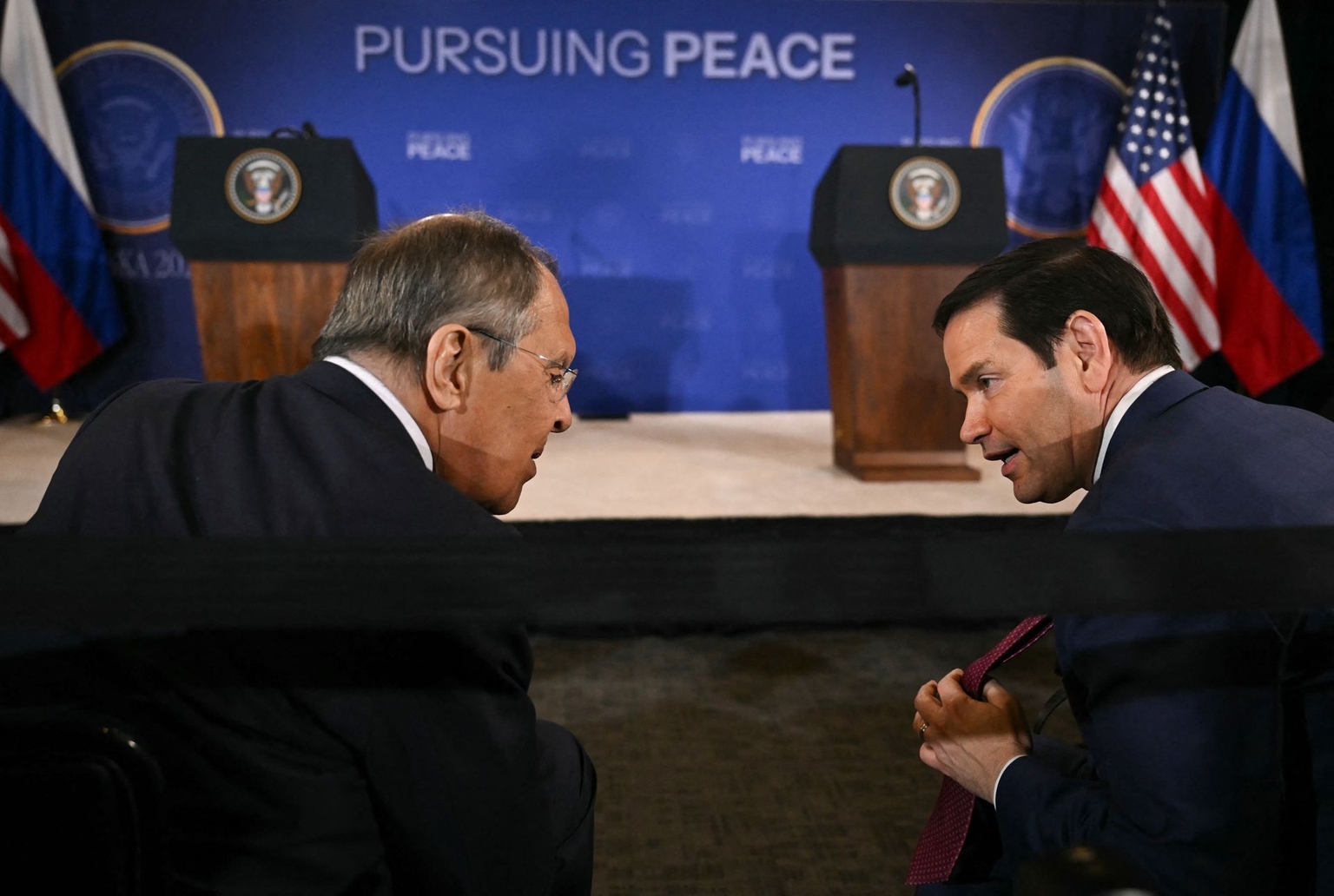
While Trump pledged to arrange direct talks between Zelensky and Putin, in what was seen as the only result after the Alaska meeting, no agreement was reached.
Zelensky rejected Putin's invitation to meet in Moscow on Sept. 5, calling it impossible while Russia bombs Ukraine, but repeatedly said he is ready to meet the Russian leader on neutral ground.
Since Putin effectively refused to meet Zelensky and no breakthrough was achieved during the Alaska meeting, Trump once again grew frustrated with Putin's demands.
Trump sides with Kyiv
At the U.N. General Assembly on Sept. 23, Trump struck a new tone. After meeting Zelensky, he praised Ukraine's resilience and said Kyiv could "win back all of Ukraine."
"I think Ukraine, with the support of the European Union, is in a position to fight and win all of Ukraine back in its original form," Trump wrote on Truth Social.
The statement stunned both Kyiv and Europe. It contradicted Trump's earlier claim that Crimea "will stay with Russia" and his push for a ceasefire based on existing front lines.
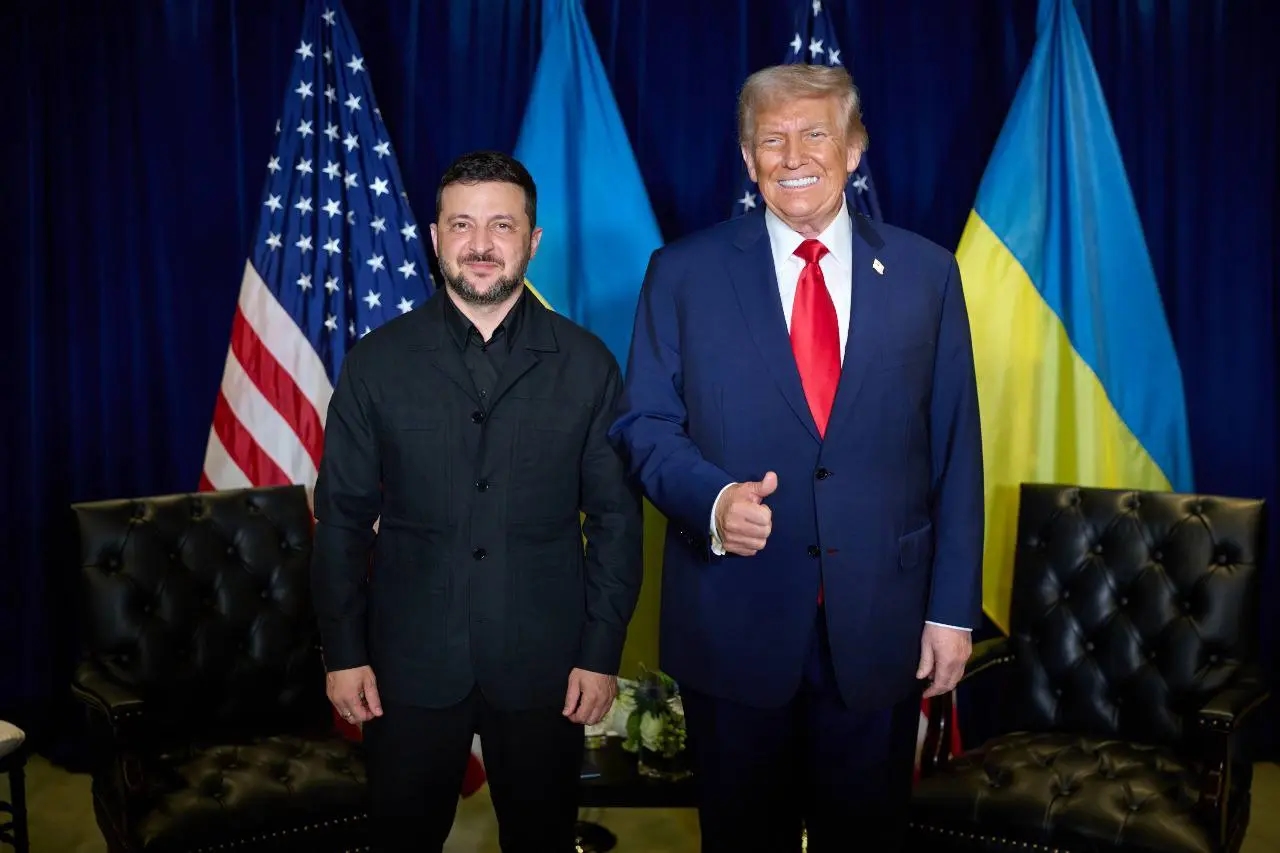
Zelensky, speaking later that day, said Trump had "realized that Putin was simply sharing information far from the truth."
U.S. Vice President JD Vance said on Sept. 24 that the U.S. leader "is growing incredibly impatient with the Russians… because he doesn't feel like they're putting enough on the table to end the war."
For a moment, Trump appeared to trust Zelensky more than Putin — an alignment that didn't last long.
From anger to sympathy, again
In early October, Trump told reporters he was ready to send Tomahawk missiles to Ukraine but added he would "have to speak to Russia first."
On Oct. 16, he held a call with Putin, during which the two leaders agreed to meet again — this time in Budapest "to end this inglorious war."
The phone call had a direct impact on the Ukrainian leader's preagreed visit to Washington scheduled for Oct. 17. The meeting reportedly was tense.
According to the Financial Times, Trump pressured Zelensky to accept a deal that would hand over the entire Donbas region to Russia in exchange for small parts of the south.
After the meeting, Trump said on Oct. 17, "It's time to stop the killing and make a deal."
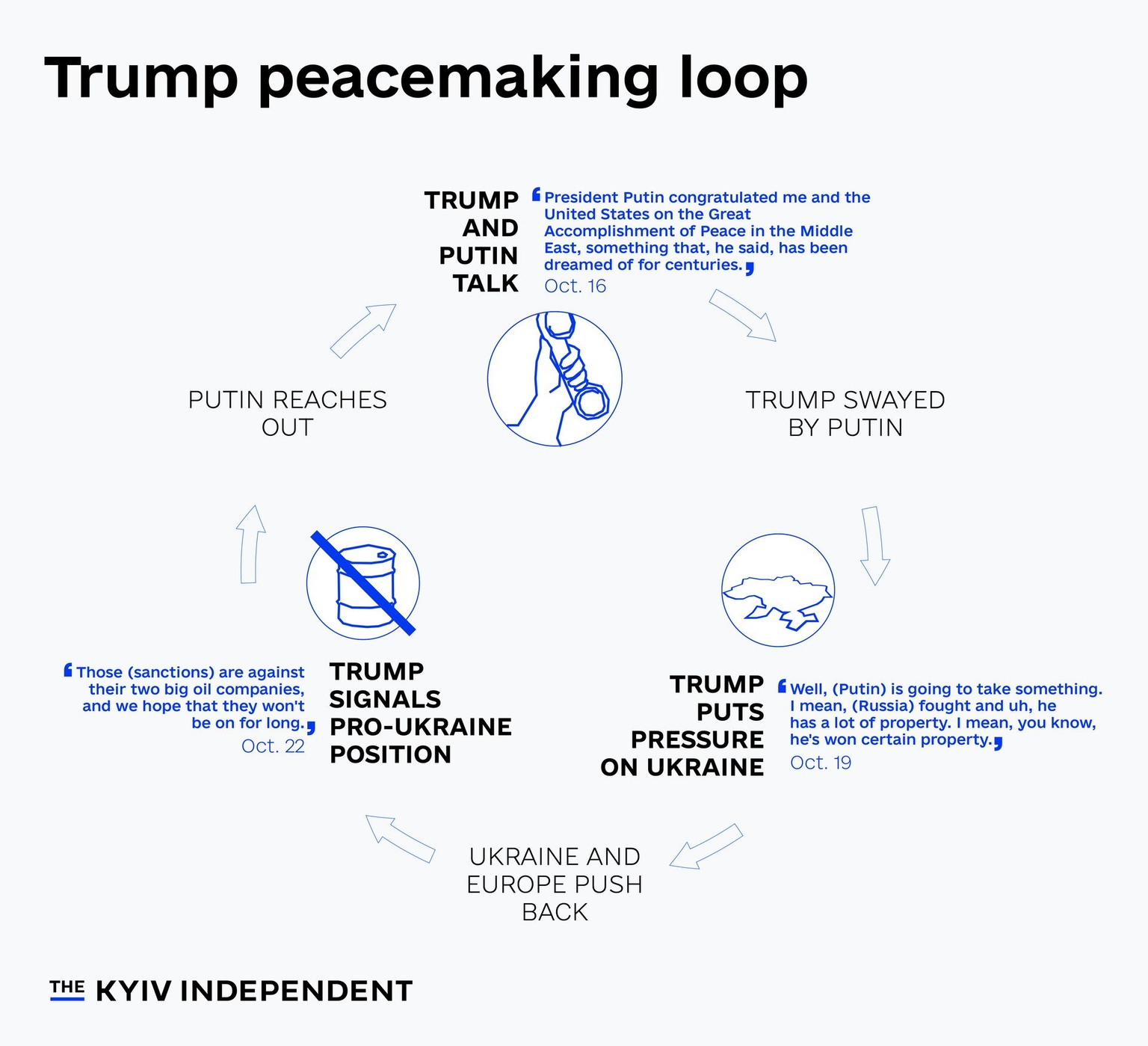
Then came another reversal. In an interview with Fox News on Oct. 19, Trump said Putin had "won certain property" in Ukraine and should be expected to keep it as part of a peace deal.
"Well, he's going to take something," Trump said. "He's won certain property."
Ukraine also saw no Tomahawk deliveries after Zelensky's Washington visit.
The circle closes
Although Trump was previously angry at Putin, his tone softened again, and Russia appears to have avoided a new wave of U.S. pressure, which could have involved the provision of Tomahawks to Ukraine.
On Oct. 20, the U.S. Secretary of State held a call with Lavrov to prepare for the planned Budapest summit — the same one Trump was ready to hold days earlier.
The Russian foreign minister said on Oct. 21 that Russia does not plan to end hostilities in Ukraine without a comprehensive peace agreement, adding that "simply stopping means forgetting the root causes of this conflict."
After that, Trump again shifted his tone on Russia, with the U.S. sanctioning two Russian oil giants, Rosneft and Lukoil, in an effort to pressure Moscow into agreeing to a ceasefire
This marked the first time Trump has imposed sanctions on Moscow since taking office.
"Those are against their two big oil companies, and we hope that they won't be on for long," he said. "We hope that the war will be settled..."
The U.S. president also said he decided to cancel his meeting with Putin in Budapest.
"It didn't feel like we were going to get to the place we have to get — so I canceled it, but we'll do it in the future," Trump said, adding, "hopefully (Putin) will become reasonable and hopefully Zelensky will be reasonable, too."
Eight months after his first promise to "stop the deaths," the U.S. president's mediation remains defined by contradiction — an endless cycle in which Trump alternates between warning Putin and echoing him, between siding with Kyiv and doubting it.
For Ukraine, the outcome remains the same: a war that keeps claiming lives while the world watches the cycle repeat.
Note from the author:
Hi, this is Tim. Thanks so much for reading! At the Kyiv Independent, we don't have a wealthy owner or a paywall — we rely on readers like you to keep our journalism alive. Our goal is to explain the world clearly and walk you through what's really happening, so you can understand the events shaping Ukraine and beyond. If you found this article helpful, consider joining our community today and supporting independent reporting.



